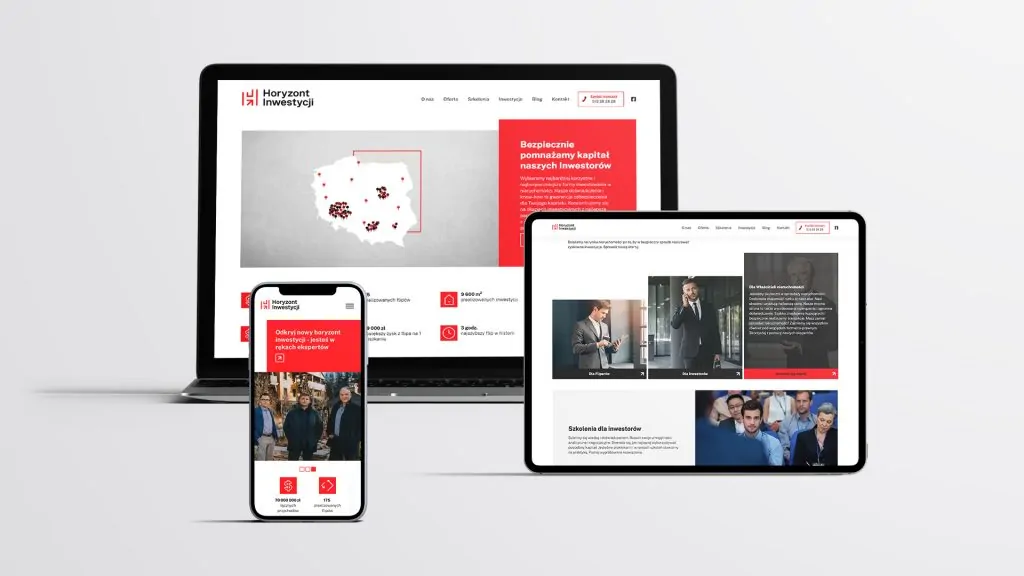Companies are increasingly recognising that building a strong employer brand is both a way to attract talent, but also a factor in employee engagement and retention. In today's working environment, where candidate expectations are evolving and competition for the best professionals is intensifying, effective employer branding activities can be a market advantage for organisations.
Employer Value Proposition (EVP) as a basis for strategy
The Employer Value Proposition (EVP) is at the core of any impactful organisation's employer branding strategy. An EVP is a set of unique benefits and values that a company offers its employees in return for their skills, abilities and experience. An effective EVP goes beyond standard benefits such as a competitive salary or healthcare package.
Creating an effective EVP requires an analysis of the needs and aspirations of current and potential employees. Successful companies in building a strong employer brand often focus on the following elements in particular:
- Professional development opportunities - mentoring programmes, training and career paths
- Organizational culture - company values, working atmosphere and interpersonal relations
- Innovation - the opportunity to work on innovative projects and technologies
- Work-life balance - flexible working hours, possibility to work remotely
- Social responsibility - the company's involvement in CSR activities
When creating an EVP, it is worth bearing in mind the authenticity of the message. Promises made to potential employees must be reflected in organisational reality. A discrepancy between declarations and practice can lead to disappointment and a rapid loss of trust in the employer brand.

Employer branding tools
Effective employer branding activities require the use of a wide range of tools, both internal and external. Internal activities focus on building the commitment and satisfaction of existing employees, while external activities aim to attract new talent and build a positive company image in the labour market.
Internal employer branding activities
- Development and training programmes
- Evaluation and feedback systems
- Employee recognition and reward schemes
- Team-building and culture-building events
- Internal newsletters and communication platforms
External employer branding activities
- Presence on social media
- Cooperation with universities and participation in job fairs
- Ambassador programmes
- Expert publications and participation in industry conferences
- Recruitment campaigns and employer branding video
Social media plays a special role in employer branding activities. Platforms LinkedIn, Instagram if TikTok enable companies to present their corporate culture, employee achievements and development opportunities in an attractive and engaging way.
Spotify is an example of a company that uses social media effectively in its employer branding activities. The company runs a dedicated profile on Instagram (@lifeatspotify), where it showcases employees' daily lives, organised events and development opportunities. Spotify also uses storytelling to showcase its employees' success stories and how the company supports their passions and professional development.
Company blogs are another important tool in employer branding. They make it possible to showcase the expertise of employees, which builds the authority of the company and demonstrates the level of competence of the team to potential candidates. Examples include Netflix's tech blogwhere the company's engineers share their experiences and technological solutions.
Are you ready to become an even better employer?
Check how we can support your company in this area.
Employee development and involvement
Companies that invest in developing their team build loyalty and increase retention, as well as creating an authentic message that attracts potential candidates. As he said Richard Branson, founder Virgin Group:
"Take care of your employees and they will take care of your customers. It's as simple as that."
Training and development programmes should go beyond standard courses and workshops. More and more organisations are implementing innovative approaches, such as personalised career paths or job rotation programmes, which allow employees to learn more about the company structure and develop a variety of competences. Projects cross-functional involve teams from different departments, stimulating creativity and mutual learning, while internal academies and mentoring programmes support the development of knowledge and skills in a more structured way. Some companies even offer individual training budgets that employees can use according to their own needs and interests.
A good example of an organisation effectively supporting employee development is Googlewhich has introduced the '20% Time' programme. It allows employees to devote one fifth of their working time to projects not directly related to their daily duties. The innovative solution fosters breakthrough ideas such as Gmail or Google News, while increasing employee engagement and satisfaction. In the words of former Google CEO - Eric Schmidt:
"Innovation is the result of giving people the space and resources to bring their ideas to life."
No less important is the onboarding process for new employees, which shapes their first experience in the company. Successful onboarding often includes the support of a mentor or so-called 'buddy', who helps the new employee understand the organisation's structure and culture. Meetings with people in the company, clearly defined goals for the first months of work and regular feedback sessions to assess progress and address concerns on an ongoing basis also play an important role. Integration with the team and joint activities builds a sense of belonging and facilitates a quick introduction to the new environment. As a management expert put it - Simon Sinek:
"Great companies don't hire great people and tell them what to do. They hire great people and let them be great."
However, creating a culture of engagement and learning requires a systemic approach and support at all levels of the organisation. Open communication and transparency are important to build trust among employees. Celebrating successes and learning from failures allow the company to build on experience. It is equally important to encourage experimentation and risk-taking. This fosters innovation,and promotes collaboration between teams, which strengthens internal relationships. Gathering feedback from employees on a regular basis and putting it into practice demonstrates that the organisation takes their voice seriously. As noted Peter Drucker, considered the father of management:
"The culture of an organisation eats strategy for breakfast."
Effectiveness and employer branding practices
Successful employer branding strategies require a systematic approach and continuous evaluation. Companies that are successful in this area often use the following practices:
- Regular employee satisfaction and engagement surveys
- Analysis of data from recruitment processes and exit interviews
- Monitoring of employer brand presence in media and social media
- Collection and implementation of feedback from candidates
- Benchmarking employer branding activities of competitors
An example of a company that successfully implements these practices is Salesforce. The company regularly conducts employee engagement surveys and the results are transparently communicated to the entire organisation. Salesforce also actively uses the Glassdoor platform to monitor employee and candidate feedback, responding to feedback and making necessary changes.
The most common mistakes in employer branding include:
- Inconsistency between declared values and organisational reality
- Lack of authenticity in communication
- Focusing exclusively on external activities, to the exclusion of internal employer branding
- Failure to adapt the message to different target groups
- Lack of measurable targets and KPIs for employer branding activities
To avoid these mistakes, companies should regularly review the consistency of their actions, involve employees in the creation of their employer branding strategy and adapt their message to the changing expectations of the labour market.
Methods for measuring the success of employer branding activities include both quantitative and qualitative indicators:
- Employee Net Promoter Score
- Time and cost of recruitment
- Employee retention rate
- Quality of applications and matching of candidates
- Increase in employer brand awareness (measured e.g. number of followers on social media, reach of publications)
Unilever is an example of a company that effectively measures the effectiveness of its employer branding activities. The company uses advanced analytical tools to track the entire candidate pathway - from initial contact with the employer brand, through the recruitment process, to onboarding and career development. This enables Unilever to accurately determine the ROI of its employer branding activities and continuously optimise them.
Successful employer branding activities require a holistic approach, combining internal practices with external communications. Companies that are able to create an authentic and attractive employer image attract the best talent and build committed and loyal teams. Today, when human capital constitutes a competitive advantage, investment in employer branding is becoming a strategic necessity for organisations wishing to succeed in the changing labour market!
Worth knowing:
What is employer branding?
Employer branding is not only a fashionable slogan, but above all, actions taken by companies to attract the best employees. It is a complex process involving both marketing and HR. Employer branding activities focus on building the employer's image as an attractive workplace, showing employees what benefits the company can offer. Appropriate activities in this field are the key to attracting and retaining outstanding specialists, which certainly translates into the success and development of the company.
What are the branding activities?
In today's world, branding activities have become an inseparable element of business marketing strategies. One of them is employer branding activities, i.e. conscious building of the employer's image on the labor market. These activities can take many forms, such as organizing training, investing in employee development or promoting the sustainable development of the company. Their goal is to attract the best talents, increase employee engagement and build a positive brand image.
Examples of branding activities include...?
Examples of branding activities as part of employer branding include, among others, conducting marketing campaigns, organizing industry events and conferences, publishing articles and blog entries, and being active on social media platforms. These activities allow us to create a strong and recognizable employer brand that will attract the best candidates and allow us to build a committed and loyal team.

